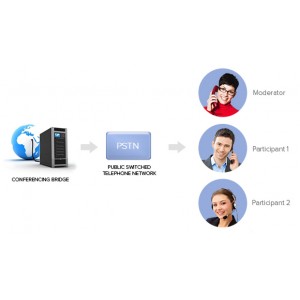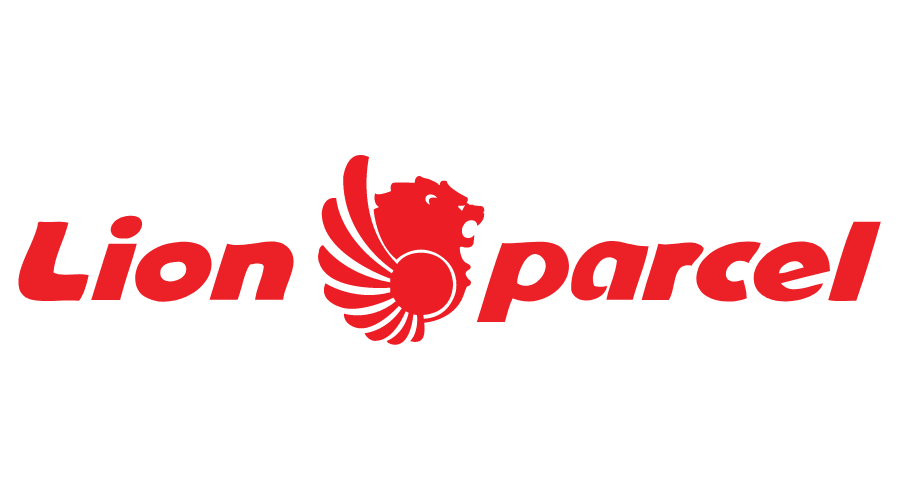Kategori
- SOLUTIONS
- OMNI CONTACT CENTER
- HOSTED | CLOUD PBX
- SIP TRUNKING
- SOLUSI HEMAT TELEPON
- IP PBX AND APPLIANCES
- IP PHONE
- CORDLESS IP PHONE
- WIFI IP PHONE
- VIDEO IP PHONE
- GIGABIT IP PHONE
- VIDEO CONFERENCE
- CONFERENCE CAMERA
- INTERACTIVE BOARD
- CONFERENCE PHONE
- CONFERENCE SYSTEM
- HEADSET
- VOIP GATEWAY
- ISDN E1 GW | CONVERT
- GSM GATEWAY
- IP INTERCOM
- IP PAGING
- NETWORK SWITCH
- WI-TEK
- Unmanaged PoE Switch
- Unmanaged ETH Switch
- Managed PoE Switch
- Reverse PoE Switch
- Passive PoE Switch
- No-Break PoE Switch
- Auto-Sense PoE Switch
- Cloud Mesh AP
- Cloud Mesh WiFi 6 Router
- Cloud L2 Managed PoE Switch
- Cloud L2 Managed Fiber Aggregation Switch
- Cloud Platform
- Mobile Cloud APP
- Cloud Mesh WiFi 6 Router
- Cloud L2 Managed PoE Switch
- Cloud L2 Managed Fiber Aggregation Switch
- Cloud Easy Smart Managed PoE Switch
- 4G LTE Outdoor CPE
- 4G LTE Indoor Wi-Fi Router
- UPS No-Break Solar PoE Switch
- Smart IoT Box
- Smart PoE Tech for WISP
- Outdoor Waterproof PoE Switch
- PoE Switch for CCTV
- Hi-PoE Long-Range PoE Switch for CCTV
- Fiber PoE Switch
- Full Gigabit PoE Switch
- SNMP Managed Gigabit PoE Switch
- Gigabit Ethernet Switch
- 2.5G/10G SWITCH
- Easy Smart Ethernet Switch
- Easy Smart PoE Switch
- Hardened PoE Switch
- Industrial Cloud Switch
- Superic Industrial Switch
- Mixed Industrial PoE Switch
- Boost Voltage Industrial PoE Switch
- 90W PoE Switch/PoE Injector/PoE Splitter
- Waterproof Industrial PoE Extender/PoE Inejctor/PoE Splitter
- PoE Injector,Splitter and Extender
- Gigabit SFP Fiber module
- Wireless Long-Range Transmit for CCTV IP Camera
- Fiber Optical Transceiver
- Indoor and Outdoor Cloud AP
- Cloud AP Controller/Enterprise Load Balance Gateway
- 3-10KM Long-Range Outdoor CPE for WISP
- 10-30KM Long-Range Outdoor CPE for WISP
- 24V Reverse PoE Switch
- SNMP Managed Gigabit Reverse PoE Switch
- Fiber Ethernet Switch
- SNMP Managed Gigabit Ethernet Switch
- GPON ONU PoE Switch
- HIMAX
- PROCET
- INDUSTRIAL POE Switch
- POE SWITCH
- GIGABIT ETH Switch
- OUTDOOR POE SWITCH
- HRUI
- WI-TEK
- WIRELESS AP
- CCTV | SURVEILLANCE
- SERVERS
- FIBER OPTIC & 3 PLAY
- ROUTER
- IP CAMERA
- SERVICES
- PA SYSTEM

PT. DIVATEL PRATAMA
Menara Kuningan 6th Floor,
Jl. H.R. Rasuna Said Blok X-7 Kav.5,
Jakarta Selatan 12940
Telp.: 021-30022778 (Hunting)
0852 8940 4589 (Mobile/WA)
Email: [email protected]
 User Online
User Online
Today Accessed: 3038
Total Accessed: 466539
Your IP: 216.73.216.111, 216.73.216.111
TCO Analysis: How to Calculate the Real Cost of a Business Phone System
written by at 2020-07-26
As you consider replacing your current phone system, have you assessed the real costs of your new communication offerings? It might be an absolute “Yes” at first sight as your suppliers always offer you a clear quote. But take a moment to rethink about it. Is it the real costs that will cover the expense for the years to come? Be aware. There may be additional expenses hidden beneath the surface that you failed to consider.
To fully comprehend your telecommunications spend, TCO analysis (Total Cost of Ownership) is a critical tool. It’ll help to unveil the financial merits of different buying models (Cloud versus premises-based) and help you decide the best option for your business.
In this blog, we’ve developed an in-depth business telephony cost roll-up analyses for your reference, which is organized into two categories:
- Upfront Costs
- Operating Costs
Upfront Costs
Whether for on-premises or cloud-based solutions, your first outlays usually come in the form of things you can physically see or clearly price-tagged. In most cases, they will cover hardware equipment, software licensing, telephony environment upgrade, new phone system training and deployment.
PBX Hardware and Software Licensing
It’s often said that on-premises solutions have greater upfront cost than hosted solutions, yet the major differentiator only lies in the PBX hardware investment. It’s a matter of owning infrastructure or renting services. With an on-site business phone system, you purchase your own PBX hardware up front, while with cloud-based voice systems, you pay for ongoing user licensing. But it’s worth noting that sometimes no initial capital expenditure is required with a cloud-based solution, except for additional phone end-point purchase.
Network Upgrade, Trunk Lines and Data Center Equipment
The other big part you might need to invest in is to prepare a proper Internet/Telecom network for the new phone system. There might be additional costs for LAN/WAN/bandwidth upgrades and/or physical trunk lines for extra telco connectivity. The equipment to involve in this process may include:
- Routers (VoIP Gateways, Router, etc.)
- LAN Equipment (POE switches)
- Cables (Patch, Stacking Cables, Fiber Channel Connectors, etc.)
- Network Security Devices (Firewalls, IPS/IDS appliances, etc.)
Training and Deployment
In most cases, proprietary or legacy PBX systems would transfer a lot of IT responsibility to users, which require highly-trained support personnel to deploy and administer software and hardware, change system settings, and roll out regular system upgrades. But if you work with a highly user-friendly PBX system like Yeastar, training and deployment costs can be greatly reduced.
Such leading PBX systems, whether on-premises or cloud-based, arrive plug-and-play ready with intuitive graphical user interfaces. It’d require minimal initial upfront training for administrators to master system functions and configurations. And most, if not all, of this training is included as a part of the on-boarding process without additional cost.
Operating Costs
Operating Costs = (Maintenance + Recurring Costs) x Time
To properly predict ongoing expenses and enable apples-to-apples comparison between hosted and on-premises solutions, it’s necessary to supply TCO calculations over a certain period. It’s suggested to project the full expense over the typical lifecycle (5 to 10 years) of a premise-based IP PBX. The operating costs can be largely divided into the following 4 parts:
PBX Subscription Fees
PBX subscription is often associated with cloud-based solutions, where fully-managed services are often delivered on a standard per-user seat price that is charged on a monthly or yearly basis. For example, say you have 20 users in your office. That means you’ll pay a fee for each user to access the cloud phone system every month or year. In general, this cost depends on not only your service provider but the calling features you want. You may find plans starting as low as $15 per user/month, but the costs will rise as capacity increases. By contrast, on-premises PBX solutions do not charge recurring user access fee as you’re the sole owner of the PBX infrastructure.
Maintenance Contracts& Software Updates
If you’re using a healthy cloud-based PBX, you don’t pay additional fees for maintenance and software assurance. The cost is distributed to per-user license over a contracted amount of time.
If you’re using a legacy (analog) phone system, maintenance can be steep, as onsite tech support is often required even for some basic configurations.
If you’re using a leading IP-based hardware PBX system that requires minimal support, the maintenance (the move, add, changes and software update) may cost only a few or even zero. But there is a certain amount of hidden costs like unexpected component break down and issue trouble-shooting that should be taken into considerations. Some on-site PBX suppliers would provide optional phone system managed services or maintenance contracts to offer low to no-cost replacement parts and maximize the ease of use for users.
Standalone Business Service and Licensing
Some business phone system solutions just don’t offer full functionality that your business needs. Costs for these services may come through third-party vendors, which can add up to substantial extra fees. Or, you may find extra costs for services such as call recording, video conferencing, and unified communications, which are delivered as standalone value-added services and charged independently as per minute/user/solution package.
Telecom Costs & Network Expense
Based on your business phone line requirement, this part may include monthly phone bills or network expenses, such as Internet access and bandwidth costs for voice over IP, physical lines with local access like PSTN, T1s, PRIs, and toll and SIP trunking charges.
In most cases, legacy phone systems require bonded T1s, PRIs, and other trunk links to connect the PBX in the building to local telcos. These lines usually charge at a much higher rate than Voice over IP, especially for long-distance or international calls. But if you’re working with an IP PBX, whether cloud-based or on-premises, you’ll have greater flexibility in choosing a cheaper option with SIP trunking.
The Bottom Line
Higher upfront does not necessarily mean a higher total cost of ownership. To get an accurate TCO analysis when comparing the on-premise PBX with the hosted, each of the above categories must be considered.
Comments
 021-30022778
021-30022778
![]() SALES & MARKETING :
SALES & MARKETING :
Indra Ilham - Ext. 111
John - Ext. 110
DIVATEL - 0851-7306-0800
Ismed S. - 0852-8940-4589
Dipa A. - 0821-1063-2366
Indra Ilham - 0818-188-818-59
John - 0812-1070-3999
![]() INTERACTIVE DISPLAY :
INTERACTIVE DISPLAY :
Dharma - 0878-7753-7902
Carlo - 0878-8796-8114
![]() EMAIL :
EMAIL :
Keranjang Belanja
Diskon
-

Escene ES290N
Rp 750.000 Rp 725.000
Produk baru
Dinstar UC200 Pro - IP PBX
- UC200 Pro is a powerful and reliable IP PBX designed to meet the...
Lebih lanjut Distributor Dinstar C60U-W IP Phone WiFi Murah Berkualitas Promo 2025
- Distributor Dinstar C60U-W IP Phone WiFi Murah Berkualitas Promo 2025...
Lebih lanjut Milesight MS-C5321-FPE — AI Multi-Sensor Multi-Directional Camera 4×5MP
- Dapatkan pengawasan 360° menyeluruh dengan Milesight MS-C5321-FPE,...
Lebih lanjut















































































Leave a comment